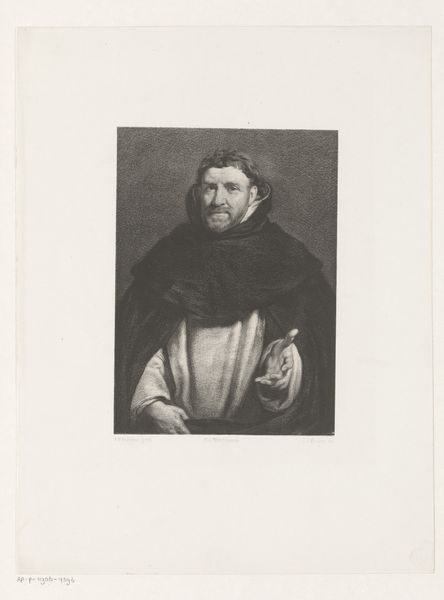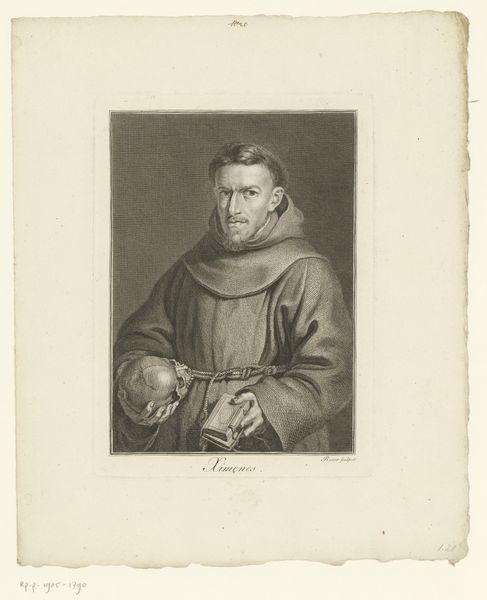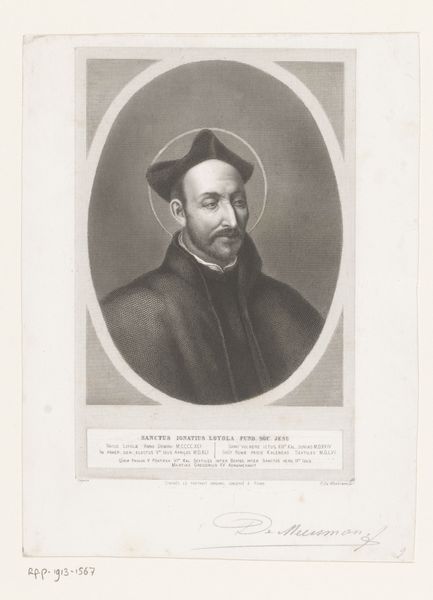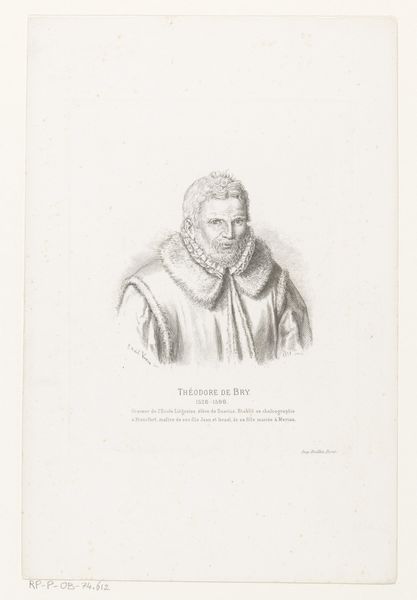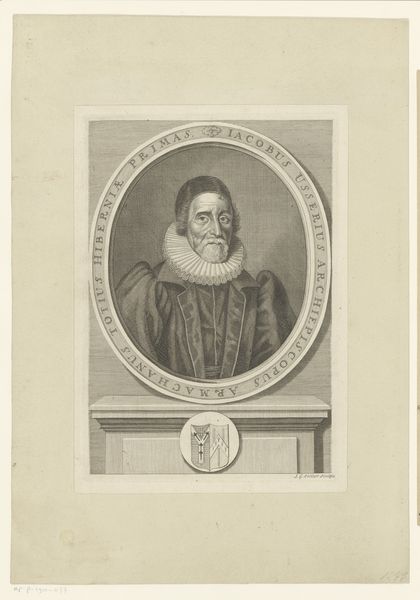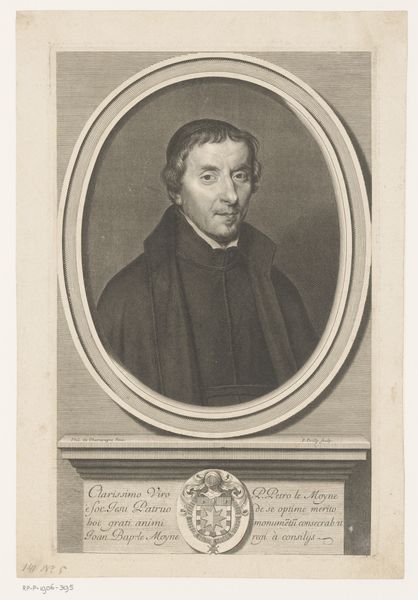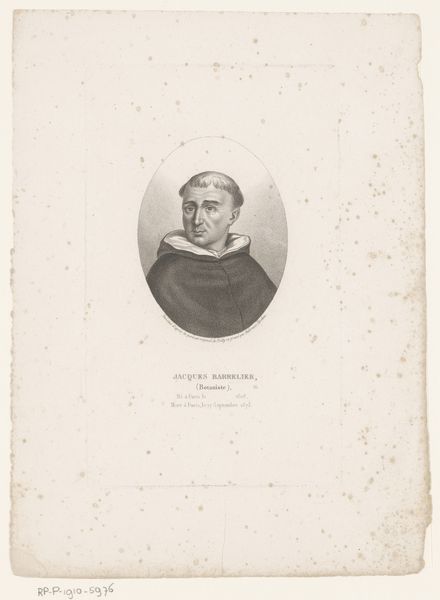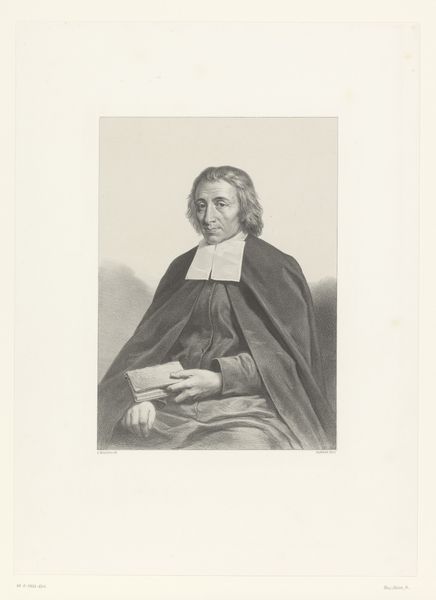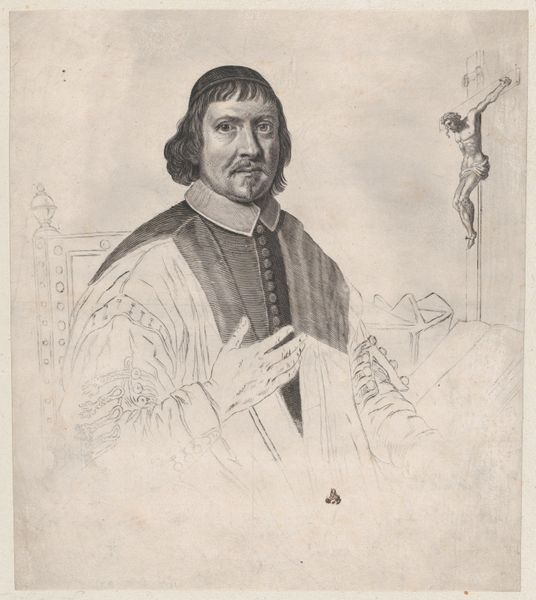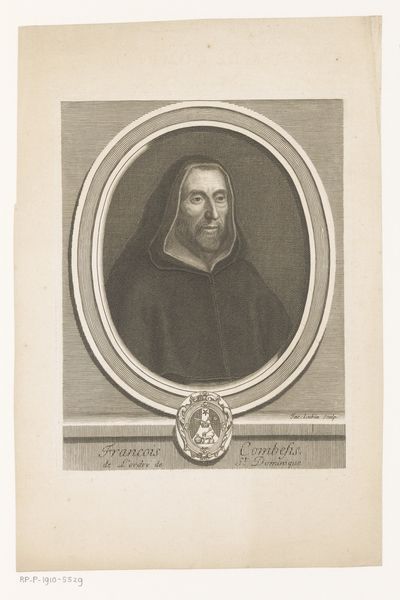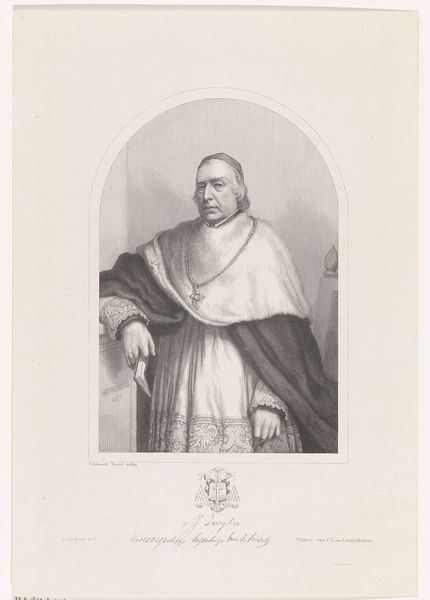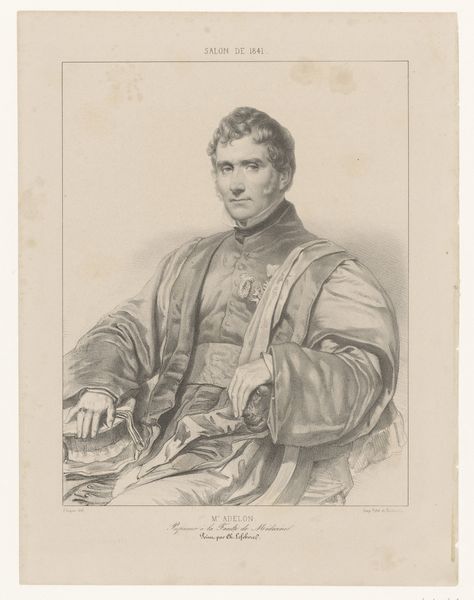
Dimensions: height 258 mm, width 209 mm
Copyright: Rijks Museum: Open Domain
Curator: Here we have a print from 1847, "Portret van Michael Ophovius," housed right here at the Rijksmuseum. The artist was Franciscus Bernardus Waanders. It's an engraving. Editor: There’s a solemnity to it, isn't there? The dark cloak and that gentle, almost beckoning hand… It has a powerful, inviting presence. Curator: It does. Ophovius was a significant figure, Bishop of 's-Hertogenbosch, during a turbulent period in Dutch history. Consider how the Baroque style lent itself to portraying figures of authority. This print serves as a document of his religious power, his likeness reproduced for public dissemination. Editor: Absolutely. And that flowing cloak...it's a visual cue to status and perhaps even a symbolic mantle of spiritual leadership, sheltering those under his care. What about his right hand? The way the artist has rendered it—extending towards the viewer… there is something very particular about this gesture. Curator: It invites contemplation, doesn't it? Consider that portraits of religious leaders often incorporate symbolic hand gestures of teaching or blessing. The choice of the Baroque is also significant. This engraving aims to establish Ophovius within that grand tradition of visual rhetoric, making him seem to be not merely of the cloth, but embodying faith, literally at hand. Editor: That reading adds layers to how we understand the political and spiritual undercurrents of that time. A portrait like this becomes an artifact of those struggles—a statement in ink and paper, asserting influence. It's a reminder of how carefully crafted such imagery could be and for what purposes. Curator: Precisely. It underscores how portraits can actively participate in the politics of memory, shaping perceptions and reinforcing certain ideological narratives. It wasn’t just about capturing a likeness; it was about creating a visual legacy. Editor: Seeing it now, considering the symbolic weight embedded in such choices, it brings an entirely different feel to this framed image. Curator: Indeed. By examining this work through the lens of historical context and visual language, we begin to understand the multi-layered power of portraiture.
Comments
No comments
Be the first to comment and join the conversation on the ultimate creative platform.
